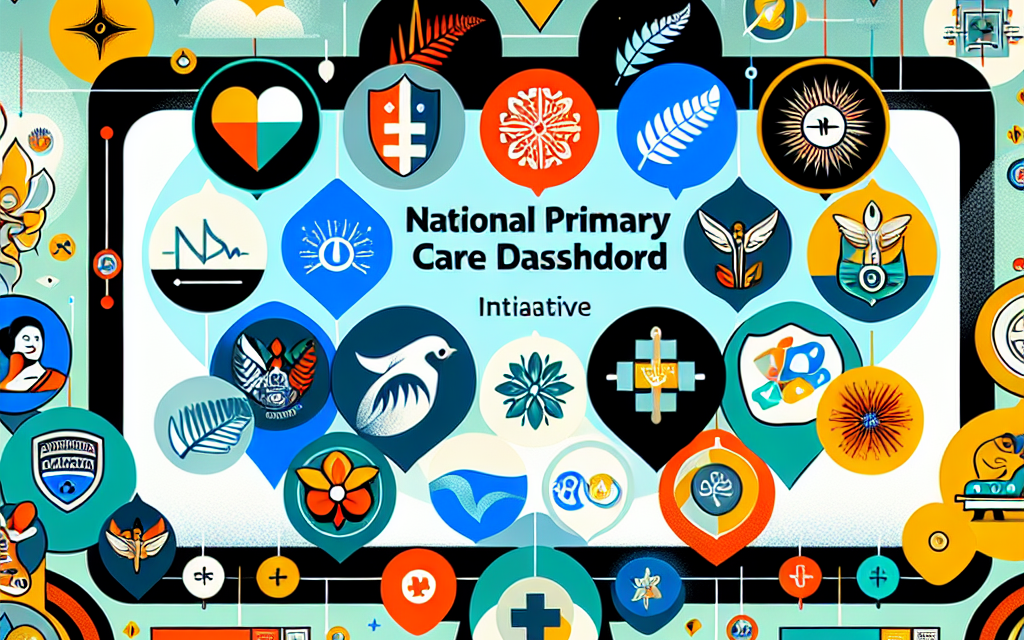11 New Zealand Primary Health Organizations Join National Primary Care Dashboard Initiative
In a significant move towards enhancing healthcare delivery and accessibility, eleven Primary Health Organizations (PHOs) in New Zealand have joined the National Primary Care Dashboard Initiative. This initiative aims to provide a comprehensive overview of primary healthcare services across the country, enabling better decision-making, resource allocation, and ultimately improving patient outcomes. This article delves into the implications of this initiative, the role of PHOs, the technology behind the dashboard, and the expected benefits for healthcare providers and patients alike.
The Role of Primary Health Organizations in New Zealand
Primary Health Organizations (PHOs) are crucial components of New Zealand’s healthcare system. They are community-based organizations that provide primary healthcare services to populations, focusing on improving health outcomes and reducing health disparities. The role of PHOs can be understood through several key functions:
- Service Delivery: PHOs coordinate and deliver a range of primary healthcare services, including general practice, nursing, and allied health services. They ensure that these services are accessible to all community members, particularly vulnerable populations.
- Health Promotion: PHOs engage in health promotion activities aimed at preventing illness and promoting healthy lifestyles. This includes community education programs, vaccination drives, and chronic disease management initiatives.
- Data Collection and Analysis: PHOs collect and analyze health data to identify trends, monitor health outcomes, and inform service delivery. This data is crucial for understanding community health needs and tailoring services accordingly.
- Collaboration: PHOs work collaboratively with other healthcare providers, social services, and community organizations to create a holistic approach to health and well-being.
- Funding and Resource Allocation: PHOs manage funding from the government and other sources to ensure that resources are allocated effectively to meet the health needs of their populations.
By joining the National Primary Care Dashboard Initiative, PHOs are poised to enhance their capabilities in these areas, leveraging data and technology to improve service delivery and health outcomes.
Understanding the National Primary Care Dashboard Initiative
The National Primary Care Dashboard Initiative is a groundbreaking project aimed at creating a centralized platform for monitoring and evaluating primary healthcare services across New Zealand. The dashboard will provide real-time data on various health indicators, enabling stakeholders to make informed decisions. Key aspects of the initiative include:
- Data Integration: The dashboard will integrate data from multiple sources, including PHOs, hospitals, and community health services. This comprehensive data collection will provide a holistic view of the healthcare landscape.
- Real-Time Analytics: With real-time analytics, healthcare providers can monitor performance metrics, patient outcomes, and service utilization. This allows for timely interventions and adjustments to service delivery.
- Accessibility: The dashboard will be accessible to healthcare providers, policymakers, and the public, promoting transparency and accountability in the healthcare system.
- Focus on Equity: A key goal of the initiative is to address health disparities among different population groups. The dashboard will track health outcomes by demographics, enabling targeted interventions for at-risk populations.
- Continuous Improvement: By providing insights into service performance, the dashboard will facilitate continuous quality improvement in primary healthcare services.
The initiative represents a significant step towards a more data-driven approach to healthcare in New Zealand, aligning with global trends in health informatics and digital health.
Benefits of the Dashboard for Healthcare Providers
The implementation of the National Primary Care Dashboard is expected to yield numerous benefits for healthcare providers, particularly the PHOs involved. These benefits can be categorized into several key areas:
- Enhanced Decision-Making: Access to real-time data allows healthcare providers to make informed decisions regarding resource allocation, service delivery, and patient care. This data-driven approach can lead to more effective interventions and improved health outcomes.
- Improved Patient Care: By monitoring patient outcomes and service utilization, healthcare providers can identify areas for improvement in patient care. This can lead to more personalized and effective treatment plans.
- Increased Accountability: The transparency provided by the dashboard promotes accountability among healthcare providers. They can track their performance against established benchmarks and strive for continuous improvement.
- Collaboration Opportunities: The dashboard fosters collaboration among PHOs and other healthcare providers. By sharing data and insights, organizations can work together to address common challenges and improve overall health outcomes.
- Resource Optimization: With better visibility into service utilization and patient needs, healthcare providers can optimize their resources, ensuring that they are used effectively to meet community health needs.
These benefits not only enhance the operational efficiency of healthcare providers but also contribute to a more effective and responsive healthcare system overall.
Impact on Patient Outcomes and Community Health
The ultimate goal of the National Primary Care Dashboard Initiative is to improve patient outcomes and community health. By leveraging data and technology, the initiative aims to address several critical areas:
- Chronic Disease Management: The dashboard will enable healthcare providers to monitor chronic disease prevalence and management more effectively. By identifying trends and gaps in care, providers can implement targeted interventions to improve management of conditions such as diabetes, hypertension, and asthma.
- Preventive Care: With access to comprehensive health data, PHOs can promote preventive care measures more effectively. This includes vaccination programs, screening initiatives, and health education campaigns aimed at reducing the incidence of preventable diseases.
- Health Equity: The dashboard’s focus on tracking health outcomes by demographics will help identify disparities in health access and outcomes among different population groups. This information can inform targeted interventions to address these disparities.
- Patient Engagement: By providing patients with access to their health data and outcomes, the dashboard can enhance patient engagement in their own care. Informed patients are more likely to participate actively in their health management.
- Emergency Preparedness: The real-time data provided by the dashboard can enhance emergency preparedness and response efforts. By monitoring health trends, healthcare providers can anticipate and respond to public health emergencies more effectively.
Ultimately, the initiative aims to create a healthier population by addressing the root causes of health disparities and promoting equitable access to quality healthcare services.
Challenges and Considerations for Implementation
While the National Primary Care Dashboard Initiative holds great promise, several challenges and considerations must be addressed to ensure its successful implementation:
- Data Privacy and Security: The collection and integration of health data raise concerns about patient privacy and data security. Robust measures must be implemented to protect sensitive information and comply with legal regulations.
- Interoperability: The success of the dashboard relies on the ability to integrate data from various sources. Ensuring interoperability between different health information systems is crucial for accurate data collection and analysis.
- Training and Support: Healthcare providers will require training and support to effectively utilize the dashboard. Ensuring that staff are equipped with the necessary skills to interpret and act on the data is essential for maximizing the initiative’s benefits.
- Stakeholder Engagement: Engaging stakeholders, including healthcare providers, policymakers, and patients, is vital for the initiative’s success. Their input can help shape the dashboard’s design and functionality to meet the needs of all users.
- Funding and Resources: Adequate funding and resources are necessary to support the development and maintenance of the dashboard. Ensuring sustainable financial support will be critical for its long-term success.
Addressing these challenges will require collaboration among various stakeholders, including government agencies, healthcare providers, and technology partners.
Conclusion: A New Era for Primary Healthcare in New Zealand
The joining of eleven Primary Health Organizations in New Zealand to the National Primary Care Dashboard Initiative marks a pivotal moment in the evolution of primary healthcare in the country. By harnessing the power of data and technology, this initiative aims to enhance service delivery, improve patient outcomes, and promote health equity across diverse populations.
As PHOs embrace this new approach, they will be better equipped to address the complex health needs of their communities. The benefits of real-time data access, improved decision-making, and enhanced patient engagement are poised to transform the landscape of primary healthcare in New Zealand.
However, the successful implementation of the dashboard will require careful consideration of challenges such as data privacy, interoperability, and stakeholder engagement. By addressing these issues collaboratively, New Zealand can pave the way for a more effective, equitable, and responsive healthcare system.
In summary, the National Primary Care Dashboard Initiative represents a significant step forward in New Zealand’s healthcare journey, promising to deliver better health outcomes for all citizens and setting a benchmark for primary healthcare initiatives worldwide.





